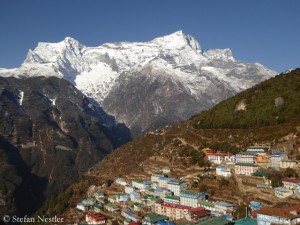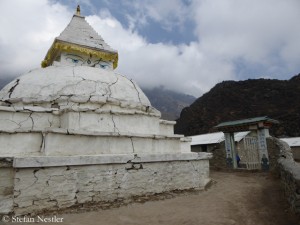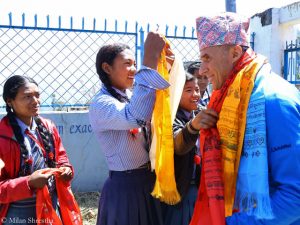Safe in Khumbu
Safety is primarily a feeling. Often we don’t even realize the lurking objective danger. And if we do, then usually only if we have no other option than facing the danger. A week ago I have returned from my trekking in Khumbu, the region around Mount Everest. Eleven months have passed since the devastating earthquake in Nepal. I think that my senses were quite sharpened because it was an objective of my journey to inform myself about the consequences of the quake. I can send all the people who want to travel to the region for trekking or climbing on their way with my experience: I felt perfectly safe in Khumbu.
Memories of civil war
This was not the case during my first visit to Everest region 14 years ago. In 2002, there was a night-time curfew in Namche Bazaar starting at 5 p.m. because of the civil war with the Maoists. The soldiers of the local military station were nervous, I heard shots. It was only when we reached Tengboche monastery at 3,860 meters, that my former mountain guide Gowa Lama said: “Now we are safe. The Maoists have not penetrated higher so far.” The civil war in Nepal has been over since 2006. Ten years later we were able to hike through the impressive mountains of the Himalayas without need to think about charges to pay to rebels or about getting caught in the crossfire.
Most of the debris cleared
The earthquake on 25 April 2015 has left marks also in Khumbu, but the area got off rather lightly compared for instance with the particularly hard-hit Sindhupalchowk District. Here and there some stupas (tombs of Buddhist lamas who according to religion were reborn) with deep cracks still witness the earthquake. But most of the debris has been cleared. In many places, new buildings have already replaced the collapsed houses, which had been mostly traditional Sherpa buildings. The trekking trails are well maintained, virtually no traces of the earthquake can be seen there.
Depending on tourism
Maybe I also felt so safe in Khumbu because there was much less talk about the earthquake. People in the Everest region seem to have come to terms with last year’s natural disaster and ticked it off. Probably because they were affected not that bad. The consequences of the earthquake were more indirectly: The tourism market collapsed because foreigners were worried about their safety. My impression in Khumbu: These concerns are groundless. You can travel there without worrying. The mountain guides, porters, farmers, lodge owners and shopkeepers, who heavily depend on income from tourism, will thank you: with great hospitality and an honest smile.











